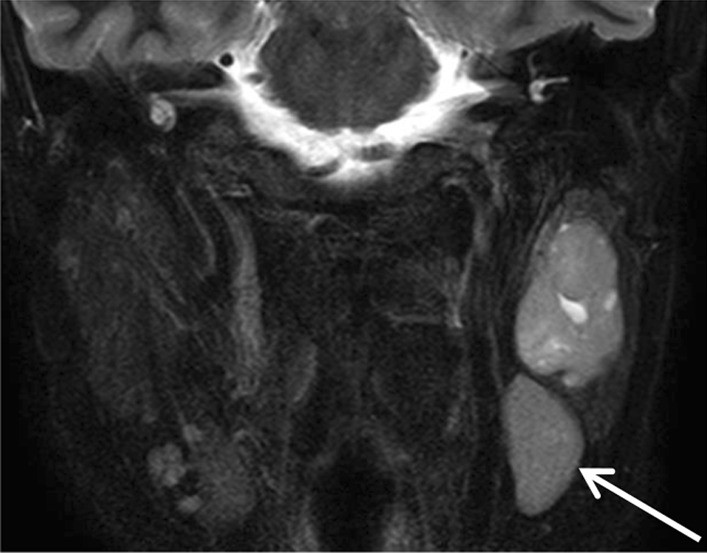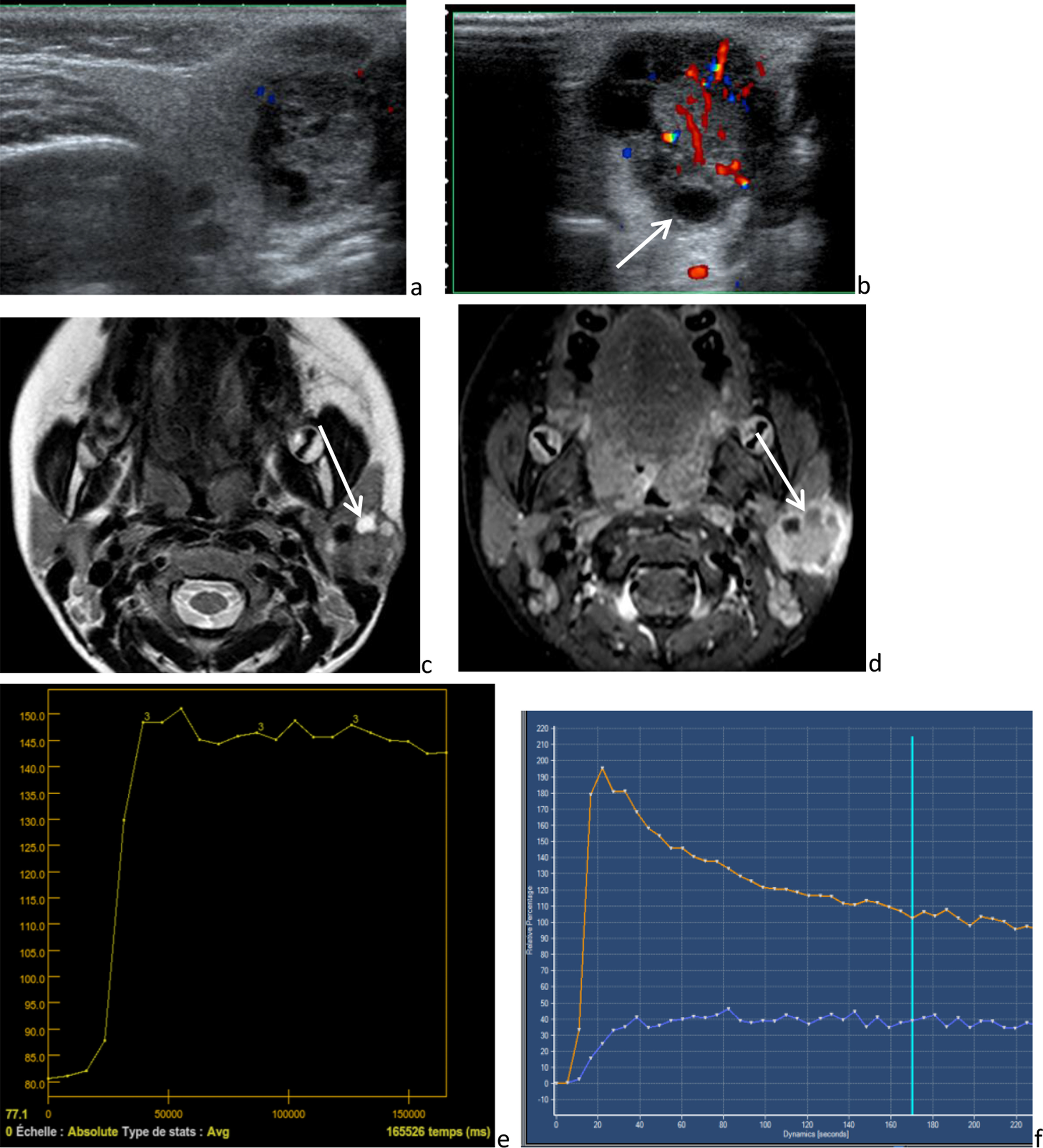carcinoma ex pleomorphic adenoma
Carcinoma ex pleomorphic adenoma is the most common of three malignant mixed tumors of salivary glands, and are thought to arise from pre-existing pleomorphic adenomas (or benign mixed tumors) .
Epidemiology
These tumors usually occur in older patients (6 to 8 decade), who have had a pleomorphic adenoma in situ for many years (typically 10-15 years) .
Clinical presentation
Patients will describe having had a stable parotid mass for many years, before experiencing rapid growth, often associated with painful facial nerve palsy due to tumor infiltration .
Radiographic features
As these tumors are aggressive and infiltrating, they present as irregular masses extending into the gland parenchyma and beyond.
MRI
- T1: heterogeneous signal due to hemorrhage, necrosis and calcification
- T2: heterogeneous but generally low signal
- ADC: low values (compared to pleomorphic adenomas which typically have elevated values)
For staging see malignant salivary tumor staging.
Treatment and prognosis
These tumors have a high rate of metastasis at the time of diagnosis (25-76%) typically to brain, bone, lungs, and of course local lymph nodes .
Differential diagnosis
The differential is essentially that of other malignant salivary gland tumors including:
- mucoepidermoid carcinoma
- adenoid cystic carcinoma
- myoepithelioma
- parotid adenocarcinoma (not otherwise specified)
- acinic cell carcinoma of salivary glands
- squamous cell carcinoma of salivary glands
- intraparotid metastasis
Siehe auch:
- Adenoid-zystisches Karzinom
- Tumoren der Speicheldrüsen
- myoepithelioma
- acinic cell carcinoma of salivary glands
- Karzinosarkom
- metastasising pleomorphic adenoma
- mukoepidermoides Karzinom
und weiter:

 Assoziationen und Differentialdiagnosen zu carcinoma ex pleomorphic adenoma:
Assoziationen und Differentialdiagnosen zu carcinoma ex pleomorphic adenoma:



